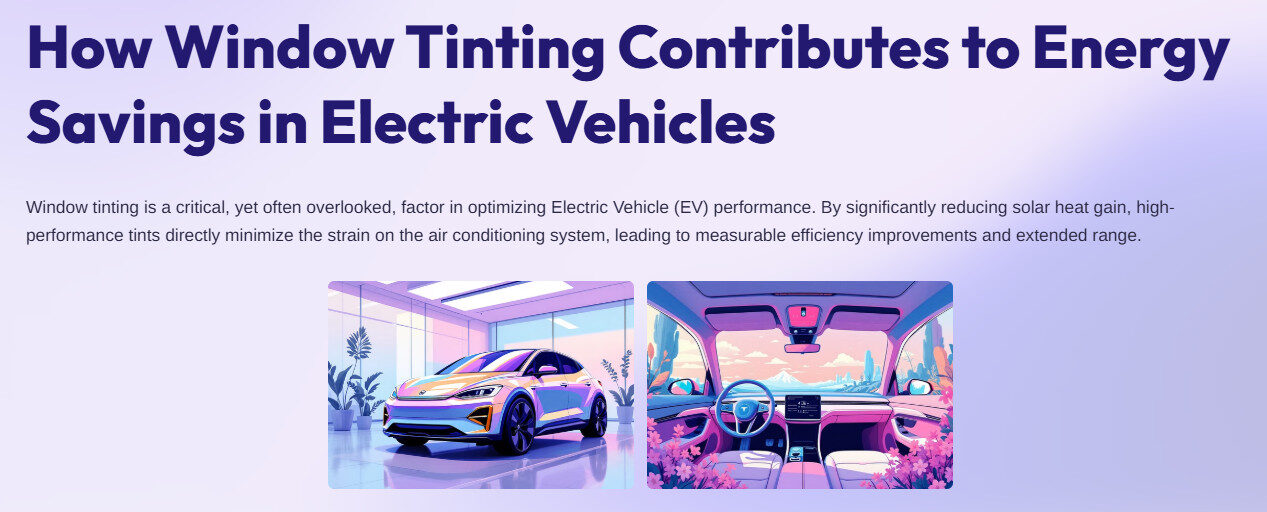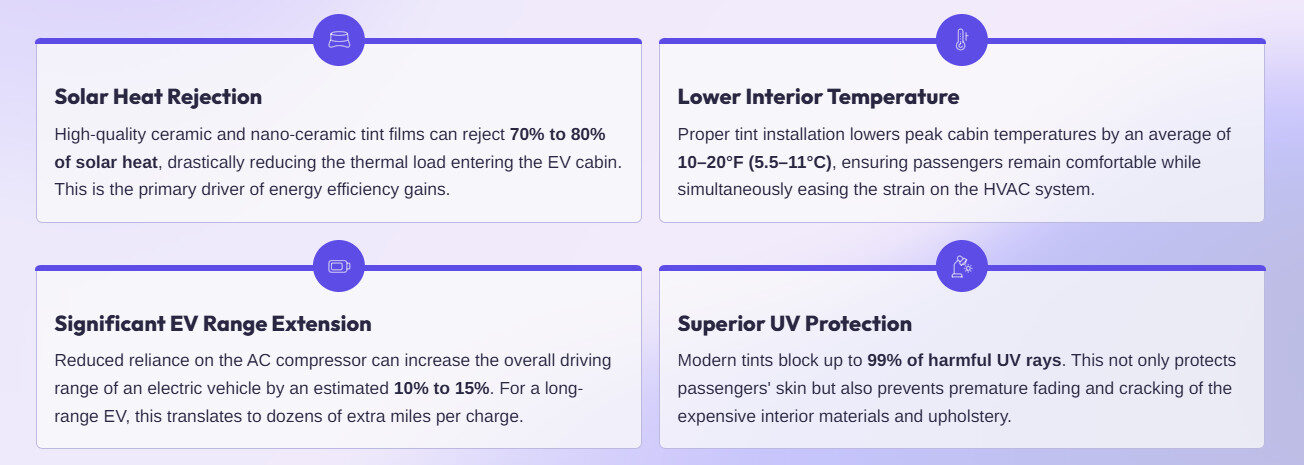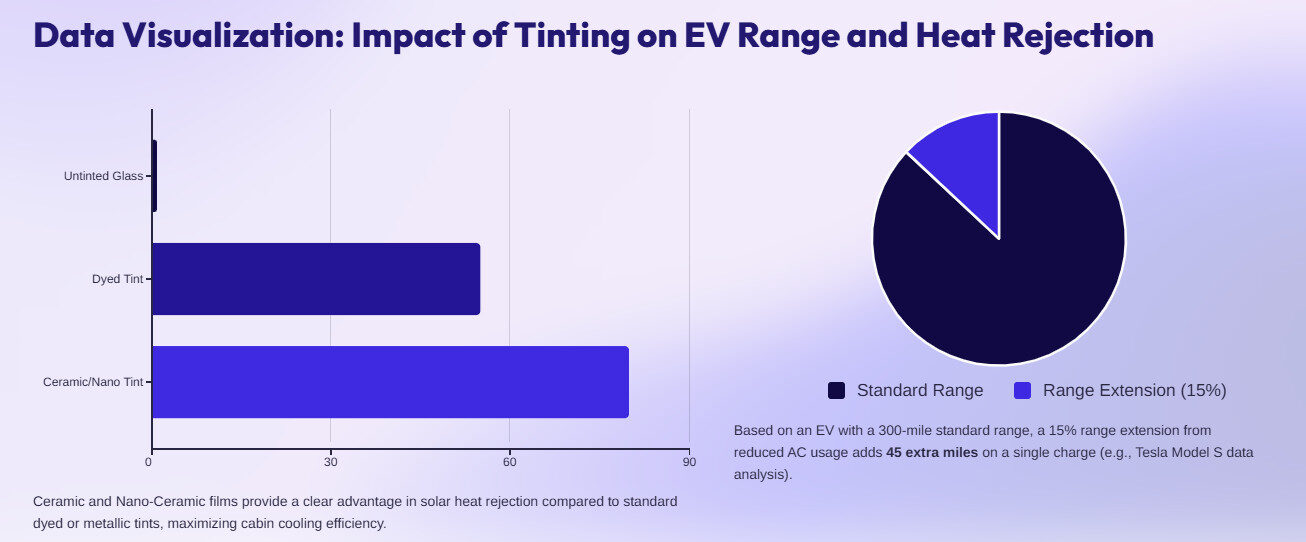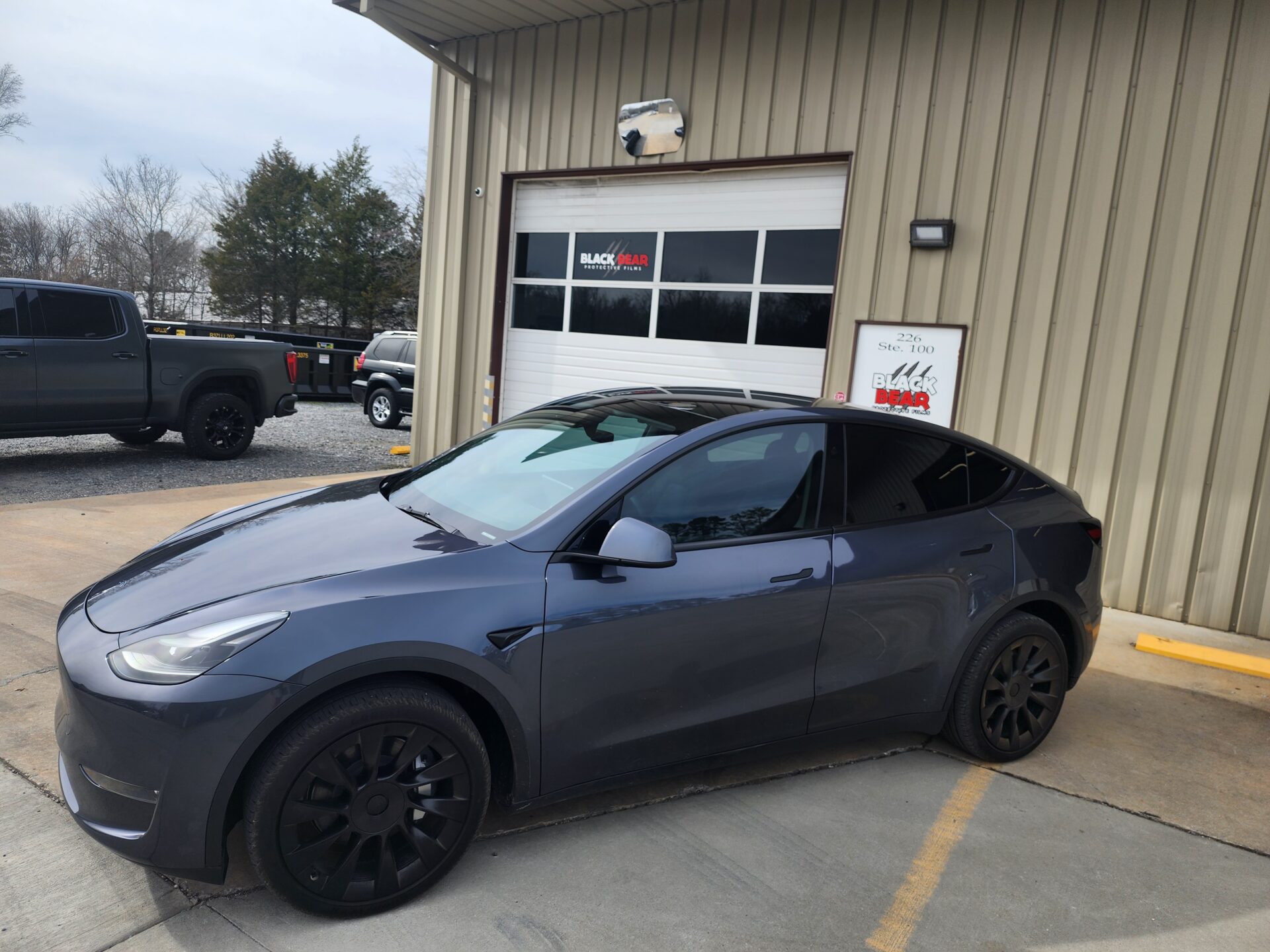Electric vehicles (EVs) are transforming the way we think about transportation. Unlike traditional cars, every aspect of energy use in an EV affects the overall driving range. That includes something as simple as keeping the cabin cool on a hot day. While EVs are celebrated for efficiency, air conditioning systems still draw heavily on the battery, reducing how far a driver can travel on a single charge.
This is where window tinting comes into the picture. Far from being just a cosmetic upgrade, window tinting helps regulate cabin temperature, reducing the need for air conditioning and ultimately conserving energy. Informational resources from Black Bear Protective Films show how tinting not only makes driving more comfortable but also directly supports the efficiency goals of electric mobility.
The Unique Energy Demands of Electric Vehicles
How Cooling Systems Affect EV Efficiency
Cooling a car may seem simple, but in an EV, it comes at a cost. Unlike gas-powered vehicles that draw AC energy from engine power, EVs pull it directly from the battery pack. Running air conditioning at full capacity can cut driving range by as much as 10–20%.
This means that in hot climates, comfort can come at the expense of efficiency. Drivers must make a trade-off: keep the cabin cool or preserve range. Window tinting reduces the heat that enters in the first place, making that trade-off less severe.
Climate Challenges for Battery Range
Battery performance is sensitive to temperature extremes. Hot weather not only increases air conditioning use but also stresses the battery itself, reducing efficiency over time. Studies show that high ambient temperatures accelerate energy consumption, making range anxiety worse for EV drivers.
By stabilizing cabin temperatures, window tinting indirectly helps reduce strain on both cooling systems and the battery. For EV owners, this represents a practical way to extend daily range without any active energy use.

The Role of Window Tinting in Temperature Control
Blocking Infrared Radiation and Heat
Infrared radiation is the largest contributor to heat buildup inside vehicles. Window Tinting Indian Land SC is designed to reject this part of the spectrum, preventing significant amounts of thermal energy from entering the cabin.
By stopping heat before it builds, tinting lessens the cooling burden on the air conditioning system. For EVs, this translates to lower battery drain during peak sunlight hours.
Reducing Cabin Heat Buildup
A car left in the sun quickly becomes a greenhouse. Untreated glass traps solar energy, and the cabin can exceed 120°F (49°C) in less than half an hour. For an EV, this means starting every trip with a hot cabin and heavy AC usage to bring temperatures down.
Tinted windows slow down this greenhouse effect, ensuring cabins remain noticeably cooler even when parked. That means less time and energy spent cooling the interior before a journey begins.
Window Tinting and Air Conditioning Load in EVs
Lowering Dependence on Cooling Systems
Air conditioning in an EV consumes energy at a rate that drivers often underestimate. A few hours of AC use can cut dozens of miles from available range. Window tinting helps by reducing the need for constant cooling.
With less heat making its way into the car, the AC can run at lower levels, maintaining comfort without draining the battery. This balance supports both passenger comfort and energy conservation.
Extending Driving Range Through Efficiency
Every percentage of energy saved from AC use translates directly into extra range. For EV owners, this can mean the difference between needing a recharge mid-day or comfortably completing longer commutes.
In real-world driving, window tinting has shown measurable improvements in efficiency, particularly in hot regions where AC use is unavoidable. This makes tinting an often-overlooked tool in extending range.
Protecting Vehicle Interiors While Saving Energy
Impact of UV Rays on Cabin Comfort
UV radiation doesn’t just fade fabrics — it also contributes to heat buildup inside cars. Seats, dashboards, and steering wheels absorb energy and radiate it back into the cabin. This cycle makes interiors warmer, requiring more cooling.
By filtering up to 99% of UV rays, window tinting reduces this heat absorption process, keeping cabin materials cooler to the touch and lessening the burden on climate control systems.
Long-Term Interior Preservation
Over years of use, heat and sunlight wear down interior materials, causing fading, cracking, and drying. Window tinting slows this process significantly. While this is often discussed in terms of aesthetics, it also has a comfort dimension — interiors that stay intact are more functional and cooler.
For EVs, where sustainability and longevity are priorities, this preservation aligns directly with efficiency goals. A well-maintained cabin requires less energy to keep comfortable.

Scientific Insights into Tinting and EV Efficiency
Data from Energy Consumption Studies
Research shows that high-performance window films can reduce interior temperatures by up to 15°F (8°C). This translates into a significant reduction in air conditioning demand. In EVs, less cooling equals longer battery life per charge.
Such findings reinforce the view that window tinting isn’t just cosmetic — it’s a scientifically backed energy-saving measure.
Real-World Examples in Hot Climates
In areas such as Arizona, Nevada, and the Middle East, EV drivers often report noticeable gains in range after installing window tint. The difference comes not from magic, but from reduced cooling loads.
These real-world experiences align with laboratory data, proving that tinting can have a direct and measurable effect on energy efficiency.
Black Bear Protective Films and Educational Impact
Informing Drivers About Efficiency Gains
Black Bear Protective Films has emphasized the importance of driver awareness in understanding how window tinting works for EVs. By presenting information about UV blocking, heat rejection, and range impact, they highlight tinting’s role in sustainable driving.
This approach helps drivers see window tinting as part of a broader efficiency strategy, not just an accessory.
Highlighting Long-Term Environmental Benefits
By lowering energy consumption, window tinting indirectly reduces the demand for charging cycles. Fewer charging sessions mean less strain on local grids and extended battery life.
Black Bear Protective Films stresses how these small, cumulative gains add up, supporting the broader environmental mission of electric vehicles.
Black Bear Protective Films Serving the Winthrop Heights and Beyond in Rock Hill, SC
Black Bear Protective Films is dedicated to serving the diverse needs of the local community of Rock Hill, SC. Including individuals residing in neighborhood like Winthrop Heights With its convenient location near landmarks such as the “Carmel Middle School, Carmel Road Park” major intersections like “Intersection of Cherry Road (SC‑901) & Oakland Avenue and Cherry Road & Forest Hill Road”(coordinates: 34.94680744356894, -81.01509690674365) We offer Window tinting services.
Get Window Tinting Services at Winthrop Heights
Navigate from Winthrop Heights to Black Bear Protective Films
How Window Tinting Boosts Energy Savings in Electric Vehicles?
- Up to 80% Solar Heat Blocked: High-quality ceramic and nano-ceramic tint films reject 70-80% of solar heat, drastically reducing cabin heat gain.
- Interior Temperature Drop: Proper tint installation lowers cabin temperatures by 10–20°F, easing HVAC load and improving comfort.
- EV Range Extension: Reduced AC use can increase electric vehicle driving range by 10-15%, translating to an extra 36-54 miles per charge (Tesla Model S data).
- Energy Savings Impact: Lower HVAC energy demand cuts battery drain, prolongs battery life, and reduces carbon footprint.
- UV Protection: Tint block up to 99% of harmful UV rays, protecting interiors and reducing cooling needs.
Visual Chart Ideas:
- Bar chart comparing solar heat rejection: Untinted (0%) vs. Dyed Tint (60%) vs. Ceramic Tint (80%)
- Line graph showing cabin temperature over time with and without tint (e.g., 22°C vs. 32°C peak)
- Range increase visualization: EV range without tint vs. with tint (e.g., 300 miles vs. 345 miles)



Sources: Elite Auto Works (2025), Hyundai Nano Cooling Film tests (2024), Tesla Model S efficiency data, Green City Times (2024)
Window tinting plays a powerful but often overlooked role in electric vehicle efficiency. By blocking heat, reducing UV radiation, and lowering AC load, tinting directly contributes to longer driving ranges and reduced energy use.
Educational efforts by Black Bear Protective Films make it clear that tinting should be viewed as an energy-saving tool for EV owners who want comfort, sustainability, and performance in one solution.
FAQs
Q1: How does window tinting improve EV driving range?
It reduces the need for heavy air conditioning, which saves battery power and extends range.
Q2: Can tinting protect EV interiors from heat damage?
Yes. It prevents fading, cracking, and heat buildup, which keeps cabins cooler and more durable.
Q3: Is window tinting effective in mild climates too?
Even in moderate climates, tinting lowers AC usage, improving efficiency and comfort.
Q4: Does tinting affect battery health in EVs?
Indirectly, yes. By lowering energy demand for cooling, fewer charging cycles are needed, reducing long-term battery stress.
Q5: Is window tinting more beneficial in EVs compared to gas cars?
Yes. Since EVs rely solely on battery energy, saving power through reduced AC load has a bigger impact on efficiency.
Our Other Blog Posts Related Window Tinting
The Science of Window Tinting: Demystifying VLT for Waxhaw, NC Drivers
How Window Tinting in Indian Land, SC Improves Driving Comfort in Hot Weather
Why Window Tinting in Indian Land, SC Protects Car Interiors from Sun Damage
How Window Tinting in Indian Land SC Protects Car Batteries and Electronics
Window Tinting Laws South Carolina | Legal Tint Limits Guide

